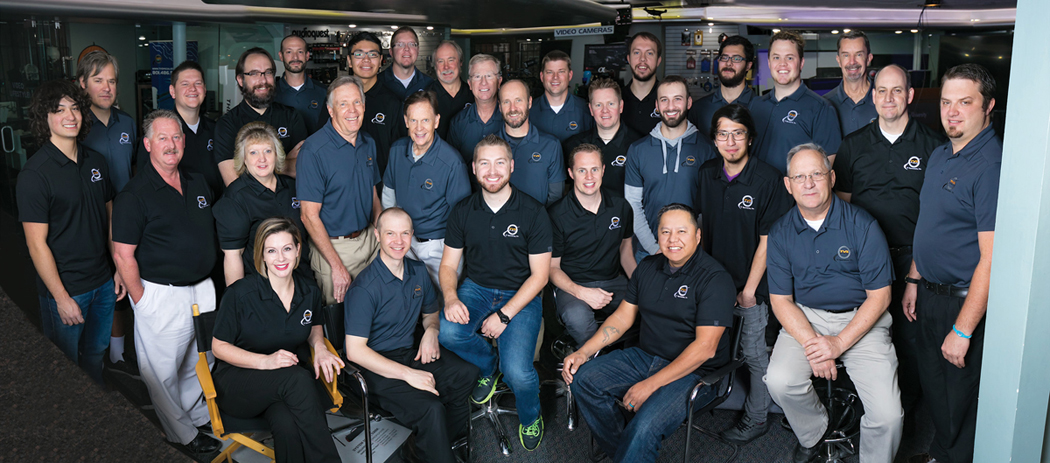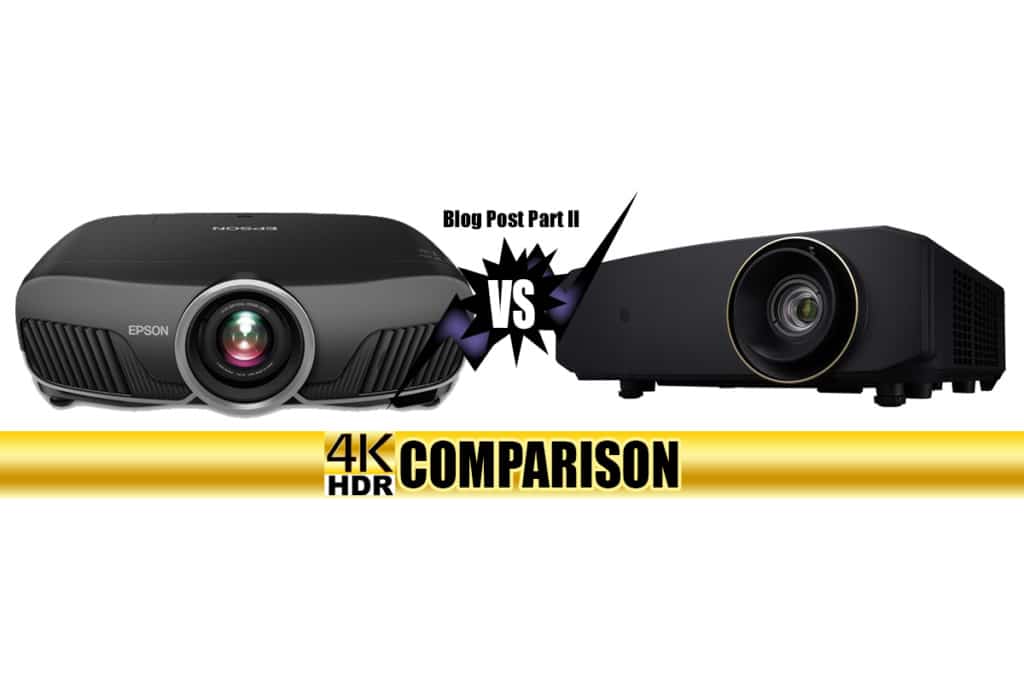AV Solutions, Home Theater
JVC LX-NZ3 vs Epson Pro Cinema 6050UB Projector Comparison Part II
If you have not read the first part of this blog, which covers the main differences between the projectors, light output & brightness, color performance & gamut, and black levels & contrast, you may want to go back and read it first. Read it here.
Resolution & Detail
This was probably our biggest surprise in this comparison. Knowing that the JVC LX-NZ3 is using a second generation .47 DLP chip, and the Epson Pro Cinema 6050UB is using its 4K enhancement, we thought for sure the little JVC would look significantly better in terms of fine detail and actual resolution. This is not the case even though it technically can resolve more detail in a resolution chart at viewing distance – you simply cannot see the difference. We concluded that this is mainly due to the JVC lens. Although we love the fact that it has both horizontal and vertical lens shift, it is not a super sharp and chromatic aberration-free lens. No real difference for HD but for 4K, the JVC LX-NZ3 should have had the advantage.






HDR Performance (Dynamic Range)
Next to really amazing color, the best thing that is even more noticeable to most people is the increase in dynamic range that HDR can provide. With a good 10-bit source and well-implemented HDR grading it is now possible to deliver over 12 stops of dynamic range. To put that in perspective, traditional 8-bit HD video can only deliver about 9 stops if everything is perfect. Dynamic range is the tonal values from deep blacks all the way up to brilliant whites, and all the values in between. Like wide color gamut, it is one more step in creating that “almost real” image.</>

One of the challenges of HDR (High Dynamic Range) is that there are not standards, in terms of levels, for the entire industry yet. That means that one studio may grade a movie at 4,000 nits (like The MEG) and another at 1,000 nits (like Guardians of the Galaxy II). The first generation of projectors from Sony, JVC, and Epson were known for their dark images in the 4K HDR modes. Fortunately through firmware updates and HDR processing refinements this has greatly improved. The challenge is that to accurately portray the highlights, the mids and low levels were dropped, and thus the images seem to appear too dark. One way to get around this is to use dynamic tone mapping to look at each scene and then set the levels for the best possible image. Neither of these two projectors have that capability. The JVC LX-NZ3, however, does have auto tone mapping which does look at the meta data of each disc and then sets its levels accordingly. Both projectors have some manual control, but their range is very different.


After making several comparisons with both test images and actual discs we concluded that the JVC LX-NZ3, with its auto tone mapping, gave a slightly better overall image on most scenes, while the Epson Pro Cinema 6050UB had more manual control for those willing to get into menus and make those adjustments. Overall, both could reproduce a very dynamic and impressive 4K HDR image from most sources.

Conclusions
One of the things we like best about doing these comparisons, to help our potential customers have more information to help them decide which projector is best for their application, are the little surprises that we find during the process. We did not expect the projectors to appear to have the same sharpness and detail as they did. We also did not expect the Epson Pro Cinema 6050UB to have such a drop in brightness with the filter that even in high lamp mode it could not equal the variable low mode of the JVC LX-NZ3. In the case of these two projectors it is really a case of what your application is as to which is best for you. If you are into 3D, 2.35:1 aspect screens, or enjoy competitive gaming – the Epson Pro Cinema 6050UB is the clear choice. If you do not want to worry about lamp life and lamp replacements (lamp anxiety), then the JVC LX-NZ3, with its 20,000 hour laser, is the clear choice. If none of those situations fit yours then it might be a little more difficult to decide. They both will do a great job in a room with some light on but if you enjoy a dedicated home theater with little or no external light then the choice is better blacks with the Epson Pro Cinema 6050UB or longer life and no maintenance on the LX-NZ3.


Here are the Theo-Charts to go with each of these projectors. To view other projectors and compare their Theo-Charts side-by-side visit Projector Comparison Charts





